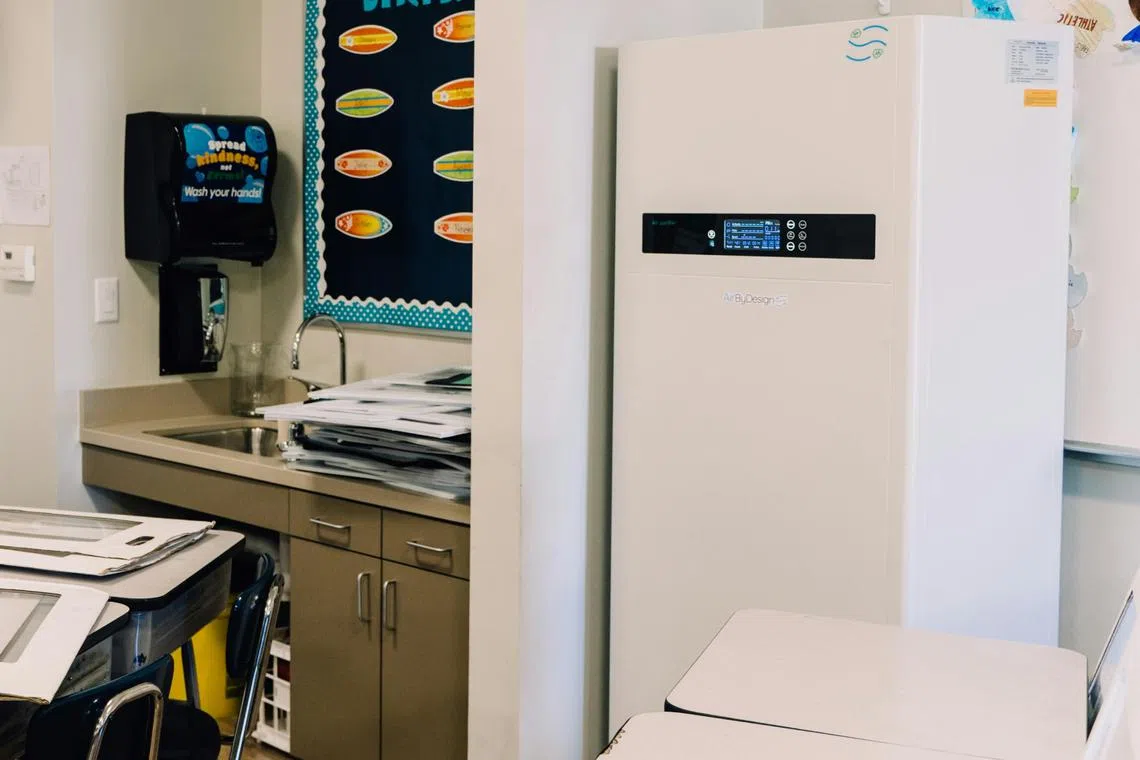ST Explains: What you need to know about air purifiers
Sign up now: Get ST's newsletters delivered to your inbox

An air purifier uses a fan to draw air from a room through one or more filters, before releasing the clean air into the space.
PHOTO ILLUSTRATION: PEXELS
Follow topic:
SINGAPORE – Air purifiers are often marketed with claims that they can remove bacteria, haze particles, viruses like Sars-CoV-2, which causes Covid-19, and the chemical formaldehyde, among other pollutants.
But in reality, the devices’ effectiveness depends on how they are used indoors and other factors that are tricky for the average consumer to ascertain.
Experts interviewed by The Straits Times clear the air on purifiers.
How does an air purifier work?
An air purifier uses a fan to draw air from a room through one or more filters, before releasing the clean air into the space.
Some purifiers have Hepa, or high-efficiency particulate air, filters that remove particles as small as 0.3 micron, such as dust, fur and some bacteria. Some other devices come with photocatalytic or activated carbon filters, which are effective in removing odours and gaseous contaminants.
Certain air purifiers have germicidal ultraviolet light or ionisers to eliminate pathogens and viruses. But experts and the National Environment Agency (NEA) have cautioned against using those that release ozone gas, which is a lung irritant.
Can air purifiers remove formaldehyde?
Air purifiers are designed to extract formaldehyde – commonly known as “new house smell” – from the air. But experts are sceptical about their effectiveness outside a laboratory setting.
Formaldehyde, often found in resins and glues used in wooden furniture, and in composite wood products such as plywood and fibreboard, can be harmful to health.
In theory, air purifiers with an activated carbon filter layer can clear gaseous contaminants like formaldehyde, said Dr Ong Kian Chung, a respiratory specialist at Chestmed clinic in Mount Elizabeth Medical Centre.
“Air must be drawn into the carbon layer, but it is unlikely that everyday users can ensure this,” he said.
It is hard for users to know whether a purifier has adequately circulated air in a space, especially if the room is large, he added.
The filter must also be regularly replaced, said Dr Ong, who is president of the Chronic Obstructive Pulmonary Disease Association (Singapore).
In a reply to ST, NEA urged consumers to exercise caution when buying devices that claim to remove formaldehyde and to ensure that product claims are backed by relevant efficacy and safety data.
There is “limited data” on the effectiveness of air purifiers in removing volatile organic compounds like formaldehyde, said NEA.
What is the best way to clear formaldehyde?
The best way to remove the chemical is by opening the windows, said air quality scientist Rajasekhar Balasubramanian from the National University of Singapore.
“It is a natural remedy,” he said. “Since formaldehyde comes from an indoor source, the best way to fix it is to let it out.”
“Manufacturers can make a lot of claims,” he added, “but most of their tests are done in controlled settings that might not be the same for users remaining in residential indoor environments.”
NEA also advises people to ventilate rooms and opt for eco-friendly building products.
What about viruses or haze?
Hepa filters are good at removing larger substances, like haze particles, dust and the Sars-CoV-2 virus, said Dr Ong.
Although the viral particles are smaller than the pores of standard Hepa filters, they are typically carried in larger respiratory droplets, which the filters are still likely to capture with at least 99.97 per cent efficiency, according to NEA.
What should I consider when buying an air purifier?
Ensure that product claims are supported by relevant efficacy and safety data, such as details on how formaldehyde is removed and how the product was tested, said NEA.
Check the purifier’s clean air delivery rate (CADR), which measures how much air can be filtered each minute. Air purifiers with a higher CADR can clean larger areas.
A general rule is to find an air cleaner with a CADR that is at least two-thirds of the room area in square feet.
Buyers should also ensure that replacement filters are readily available, as these need to be changed regularly to maintain effective air purification.
How do I know if the air purifier is working?
Users can often detect a reduction in odours, haze or dust, indicating that an air purifier is working.
Devices by some brands are equipped with sensors to gauge the level of impurities in the air, such as the PSI, or Pollutant Standards Index, level and dust.

